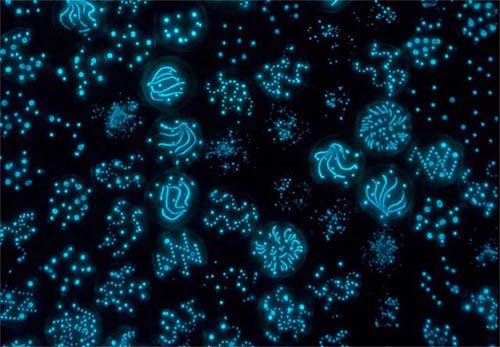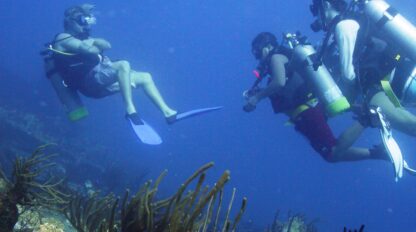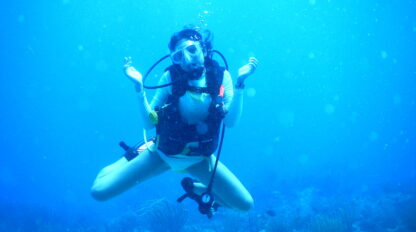The Language of Light – Bioluminescence

As a child, one of my favorite things to do in the summer was to catch fireflies in my grandmother’s backyard. My sisters and I would collect several in a mason jar and then scurry under a blanket to watch them glow. It was always a truly magical experience! Even if you live in a part of the world where fireflies are not frequent visitors, you most likely have at least heard of this natural phenomenon. It seems like such a unique trick the famous firefly has – at least, I used to think so…It turns out that bioluminescence (the ability for a living organism to produce light) is a spectacular adaptation shared by many – from bacteria, to fungi, and all the way up to even a few species of sharks! While there are many terrestrial and fresh water examples, beneath the hull of our sail boats the ocean is home to a stunning diversity of living glow-sticks.
And when the sun goes down, the light show becomes visible!

Photo From Here
The image and video above feature an array of microscopic Plankton – day or night, they are always in the water, but their tiny, transparent forms make them difficult to see without magnification. So, why is what they do so much cooler than you or me turning on a flashlight or lighting a candle? Imagine if when the power went out, and there were no batteries to be found, you could simply wiggle your ears and cause a clear blue-green light to shine from your nostrils! Okay, so that example is a bit ridiculous – but I think it gets the point across. Animals and plant-like algae have adapted to create light from their own body chemistry!
Are you intrigued yet? You should be. But if you are so far unimpressed (or better yet, really excited) – I DARE you to click this link 🙂
Bioluminescence: The Language of Light
Yeah… that’s what I thought! Awesome, right?
If you’re into the science of it all, the above video was composed primarily from Edith Widder’s TED presentation, which I really enjoyed.

Here is how it works – the process really is like cracking and shaking a glow stick. There must be at least two chemicals involved and when they combine, light is produced. The biological chemical which produces the light is generally referred to as “luciferin” and the catalyst enzyme (woo! Chemistry is all around you!) is “luciferase.” Luciferase helps luciferin combine with oxygen – the chemical reaction causes a burst of light, and leaves the oxidized luciferin inactive. (Image From Here)
Luminescence is often confused with ‘florescence’ or ‘phosphorescence’ – check out the differences here.
So, why do so many organisms in the ocean bioluminesce? Some species seem to have no apparent reason for glowing, but scientists have been able to narrow down a few categories for luminescent functions:
- Communication – similar to twinkling lightning bugs
- Locating Food – night vision goggles
- Attracting Prey – think deep sea creatures such as the well-known angler fish
- Camouflage – blending in with moonlight from the surface
- Self Defense – glowing ink clouds!
- Burglar Alarm – when threatened, the plankton emits as much light as it can, often in a distinct pattern, to attract larger predatorial animals to hopefully eat whatever is trying to eat the plankton. It’s like calling the police!
(Photo From Here)
A favorite evening activity for Sail Caribbean Teen Adventure Camps is to wait until the sun sets, don a snorkel and mask, and splash into the water to see these amazing bioluminescent creatures in real life! You also get the opportunity to experience this phenomenon while on night-time scuba dives, snorkels and sails. Check out some of the Sail Caribbean Trip Updates regarding bioluminescent adventures last summer.
Do you have any questions or comments about bioluminescence? I would love to explore this topic further in the directions most interesting to you! Also, please share your favorite stories and experiences with the rest of us!


